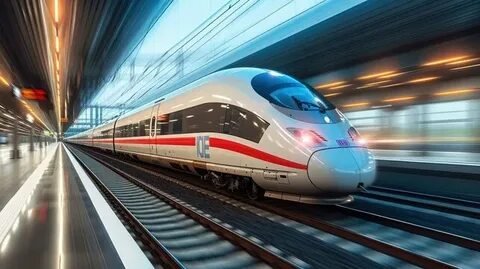Introduction
The Intercity Express Programme launched a new era of high-speed trains in the UK. Built by Hitachi Rail, it revolutionized the UK rail modernization efforts on key lines like the Great Western Main Line using bi‑mode technology. This journalist-style overview explains its scope, impact, and future.
1. What Is the Intercity Express Programme?
The Intercity Express Programme (IEP) was an initiative by the UK’s Department for Transport to replace aging InterCity 125 and 225 trains. It aimed to boost capacity, reliability, and environmental performance using modern high-speed trains built under a long-term investment model.
2. Project Scope and Goals
IEP’s scale is immense—arguably the largest rolling-stock investment in over 30 years. The project involved design, manufacture, financing, and maintenance of new trains over ~27.5 years.
It covered both the Great Western Main Line and the East Coast Main Line, ensuring modern, reliable service across long-distance routes.
3. Who Built It? Agility Trains & Hitachi Rail
The Agility Trains consortium—featuring Hitachi Rail, Axa UK, and GLIL Infrastructure—landed the contract around 2009 and finalized a £4.5 billion deal in 2012.
Hitachi built a factory in Newton Aycliffe, County Durham, to assemble the new trains using Japanese-built bodyshells but UK-based outfitting.
4. The Fleet: Advanced Bi-Mode Technology
IEP trains (Classes 800, 801, 802) are part of Hitachi’s AT300 family. The flagship Class 800 bi‑mode units can switch seamlessly between electric and diesel power—ideal across mixed electrified and non-electrified routes.
They deliver higher speeds (up to 125–140 mph), more seats, modern interiors, and better environmental performance.
5. Deployment on Key UK Routes
- Great Western Main Line (GWR): 93 IEP trains added regular seats and reliability.
- East Coast Main Line (LNER): 65 trains branded as “Azuma” by LNER.
Other operators like TransPennine Express and Hull Trains also received IEP sets.
6. Overcoming Electrification Delays
Delays in railway electrification pushed GWR’s pure electric units to be converted into bi‑mode configuration, ensuring continued service despite infrastructure slowdowns.
7. National and Industrial Impact
The project brought manufacturing back to northern England, creating engineering jobs and skills development—especially evident in Newton Aycliffe’s facility opening and apprenticeships. It also modernized UK rail infrastructure and maintenance, with depots built at strategic locations like Doncaster, Stoke Gifford, and Swansea.
8. Performance and Reliability Gains
Split electric/bi‑mode capacity has improved reliability—it now outperforms older fleets by up to 2.3 times.
Conclusion
The Intercity Express Programme stands as a milestone in UK rail modernization. With Hitachi Rail at the helm under the Agility Trains consortium, it delivered cutting-edge high-speed trains using pioneering bi-mode technology. Serving major routes like the Great Western Main Line, IEP transformed capacity, reliability, and passenger experience, while nurturing British manufacturing and engineering talent.
Frequently Asked Questions
1. What are bi-mode trains?
Bi‑mode trains, such as Class 800, can run on overhead electric power or switch to diesel engines. This flexibility tackles gaps in electrification.
2. Where are IEP trains assembled?
Hitachi’s Newton Aycliffe facility in County Durham assembles the trains, combining bodyshells from Japan with UK outfitting.
3. Which rail lines use Intercity Express Trains?
They serve the Great Western Main Line, East Coast Main Line, and are used by operators like GWR, LNER, TransPennine Express, and Hull Trains.
4. Why was electrification a challenge, and how was it handled?
Delays in electrifying the rail network forced some electric IEP units into bi‑mode operation to ensure service continuity.
5. What’s the economic benefit of IEP?
It restored train manufacturing to the UK, provided jobs, modernized infrastructure, and boosted reliability—benefiting passengers and local economies.

